
 |
|
|
Please write: dan@dancooper.tv
Return to Page One

 |
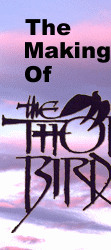 |
|
 |
|
|
 |
"The bird with the thorn in its breast, it follows an immutable law; it is driven by it knows not what to impale itself, and die singing. At the very instant the thorn enters there is no awareness in it of the dying to come; it simply sings and sings until there is not the life left to utter another note. But we, when we put the thorns in our breasts, we know. We understand. And still we do it. Still we do it."
This is the final paragraph of the 1977 novel The
Thorn Birds, by Colleen McCullough. The book was an international number one
bestseller. Its theme has overwhelming power for every woman and man who reads it. Who
among us lives a life free of wrong turns, wrong choices, that lead us into torment?
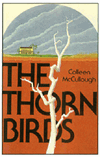 |
The Thorn Birds is a love story at its
center, and at the center of the love story is the forbidden desire that is the thorn in
the breasts of the central characters.
 Richard Chamberlain as Father Ralph de Bricassart with Sydney Penny as young Meggie. Copyright Warner Bros. |
The love between Father Ralph de Bricassart and Meggie Cleary is a passion that builds over the span of many years. Father Ralph wants above all else to be a perfect priest; to offer to God his perfect love. Meggie Cleary hates God, because she loves and longs to possess Father de Bricassart. These are the kind of choices we make in our lifescapes. Too often, we knowingly place a thorn in our breasts. Unlike the bird that has no awareness of the dying to come, we understand, and as Colleen McCullough wrote, "Still we do it."
It was inevitable that Hollywood would leap to turn The Thorn Birds into a movie. Robert Redford, then at his box office peak, was asked to play Father Ralph. But after years of writing and rewriting, the movie was abandoned.
Instead, The Thorn Birds was made as a TV miniseries, produced by Warner Bros. for ABC. Most of us have seen The Thorn Birds; many of us more than once. We see, in our minds eye, the unforgettable image above, of Richard Chamberlain as Father Ralph and Rachel Ward as Meggie. We remember Barbara Stanwyck as Meggie's Aunt Mary Carson, Jean Simmons as Meggie's mother Fee, and Richard Kiley as Meggie’s father.
When The Thorn Birds first aired in 1983, its ratings were astronomical. Incredibly, one airline showed it during flights on the evenings it was broadcast so that no one would miss an episode. It was ten hours long, spread over five nights.
This is the story of the making of The Thorn Birds. To prepare this feature, we interviewed virtually every key member of the production team, beginning with executive producer David L. Wolper, the creator of Roots. The missing team member is William Travilla, who died in 1990. Travilla designed the costumes for The Thorn Birds, including the extraordinary "ashes of roses" dress, seen above, which is worn by Meggie at the central moment of the story. Travilla designed costumes for the greatest stars in Hollywood.
And as with every great Hollywood story, this story begins with a deal being made between two Hollywood titans.
David L. Wolper, Executive Producer: I was having
dinner with the Chairman of the Board of Warner Bros., Bob Daly, and I was asking him if
there were any movie projects that he couldn't seem to get made, that would make a good TV
miniseries. I had recently had a success with Roots and Roots: The Next Generation.
 David L. Wolper, Executive Producer. Photograph courtesy David L. Wolper. |
So he said, well, we have this book The Thorn Birds, and I nearly jumped out of my seat. And he said, we've been trying for three, four years to get a screenplay. We've had four directors and four writers who couldn't come up with a suitable screen play. Robert Redford wanted to do the movie.
So I said, let me try it as a miniseries, and they turned it over to me. And I was able to sell the idea right away to ABC. And I realized why you could never make a movie of The Thorn Birds; but I knew we could make a good miniseries.
FF: And why is that?
David L. Wolper: Okay, well, in the movie, the whole purpose of The Thorn Birds is the life-long relationship between a young girl and a priest.
FF: Right.
David L. Wolper: And the audience is waiting for the priest to finally give in. A movie would do it within two hours, which is kind of sleazy. In the television miniseries, we held off the love scene for nearly eight hours. So the audience was at the edge of their seat. When is this guy going to finally give in to this wonderful, beautiful girl?
So that's the reason that the miniseries was good, because the purpose of the story was the hold-out of the priest, and he held out long enough.
And in any event, I got ABC to say we'll do it, and then I decided to put my group together.
Stan Margulies, Producer: I bought a copy of The Thorn Birds while on vacation, and I read it. And it was a lovely book, but I knew that it was supposed to be a motion picture, and I didn't give any more thought to it. And when I got back shortly after that, Warner Bros. Television came to David L. Wolper and me and said that they had given up on trying to make a feature; that Robert Redford had just turned down the part, and they were out of ideas, and they had had three or four directors and three or four scripts. And it was time to do it for TV as a miniseries.
And so I was delighted because I thought it had all
the ingredients.
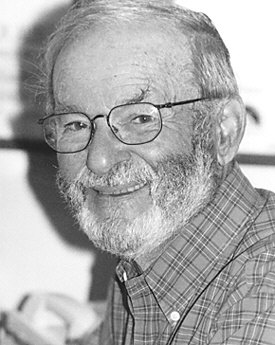 Stan Margulies, Producer. Photograph courtesy Stan Margulies. |
FF: When you were talking to Warner Bros., and they were saying that they had been having difficulties with scripts for a motion picture version, what do you think was the difficulty in the book translating into a motion picture, as opposed to a miniseries? Just the epic length?
Stan Margulies: I mean it was Roots all over again. At one point, Columbia Pictures had had an option on Roots, and they had given it up, because there are some books that you simply cannot put into a hundred or a hundred and twenty minutes.
FF: And we don't do movies as long as Gone With The Wind any more.
Stan Margulies: Well, even Gone With The Wind length would not have been enough.
FF: That's true.
Stan Margulies: That was the primary problem with trying to find, somewhere in this story, something that could be done in two hours. And it defeated some very good people.
FF: And it spanned so many decades.
Stan Margulies: Yeah, I mean it's a very full story.
Carmen Culver, Screenwriter: I had worked with
David L. Wolper on an earlier film. And as a result of that, he and his producer, Stan
Margulies, offered The Thorn Birds to me.
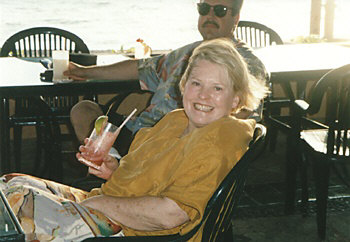 Carmen Culver, Screenwriter. Photograph courtesy Carmen Culver. |
The first thing that you really have to do is to find the themes. And that then structures everything else. What I felt, of course, what the story is about, is about a priest and a young woman and their lifelong love. And it's also about her family and their life in Australia.
But really, I felt on a deeper level what it was about was man's relationship with God. And then I began thinking in terms of how to support that general theme. Interesting because I know that you had mentioned ashes of roses.
FF: Right.
Carmen Culver: And that caught my fancy as it has that of everyone else, I think. And I began thinking about that, and thinking, what has that got to do with the theme, etc., and how can I use that? And that took me to realizing that Drogheda, the sheep station, as they call them in Australia, could symbolically be made into a place that had a hill and a place of worship.
So that heaven, in the show, is the rose garden. And the love scenes, most of them, not the steamy sexual scene which took place on the beach, but very important decisions about love and life tend to be made in the rose garden, and that, of course, is where Ralph dies also.
And there was a wool shed, which was of course where the sheep were sheared, and which was sort of the emotional heart of the place itself, and it became the cathedral. And that's the place where everyone has his or her confrontation with God.
So as I say, it really became, for me anyway, a story about how each person related to God. Meggie felt that God was her enemy. And by the end of it, if you'll remember, Ralph says that Meggie actually has always had a better relationship with God than he has, because she's always really lived life, and has been able to survive whatever God had thrown at her.
Stan Margulies: I had worked with Carmen on a number of projects, and I found her to be a very skillful, able writer with a wonderful vast curiosity, and picking a writer is one of the most important decisions a producer makes.
And I felt with young Meggie, and the Barbara Stanwyck role as the two central female characters, that it would be very appropriate to have a woman script writer.
David L. Wolper: It was more of a woman's book than a man's book.
FF: Yes, yes.
David L. Wolper: And television tries to get woman's audience more than a male audience.
So then we had the writer. And of course we had to spend, you know, the writer took some time to write the screenplay. Before you do a screenplay you do what you call a bible, which is an outline of what the story's going to be -- what the story is going to tell. You know what the book is, but you can't tell every item in the book.
And then the network looks at the bible, and you make the changes with the network. And then, once the bible is approved, you go ahead and start the screenplays.
FF: And how long a process did that take for her to do, along with the approvals?
David L. Wolper: Close to a year.
FF to Carmen Culver: So it took a year to write?
Carmen Culver: You know, it’s hard for me to remember, and particularly difficult because what happened in the midst of all this, was that there was a five month writers’ strike. So I had to suspend what I was doing for five months. So that meant that the whole process took a calendar year, but really the writing time was only six or seven months.
FF to David L. Wolper: Were there many changes?
David L. Wolper: Oh yeah. I haven't seen the script that's been written that there weren't a lot of changes. You always have changes, you know, especially when you're doing such a long screenplay.
Carmen Culver: For me, the bible is very important. I think that the larger percentage of the task of writing a screenplay goes into that bible. Which is, as he said, really an outline. If you can imagine a screenplay without the dialogue, but instead it tells you where each scene is going to take place, what is going to happen in each scene, and how that scene relates to the overall theme. That's what a bible really is.
The bibles that I do are everything, basically, but the dialogue. So that you have very few surprises.
And the importance of that bible is that -- it tells you what the structure is. And one of the ways that screenplays get into a lot of trouble and, therefore movies get into a lot of trouble, is that the structure's not sound.
4 Tape Boxed Set: Buy Now
Buy The Thorn Birds
Soundtrack!
CD: Buy Now
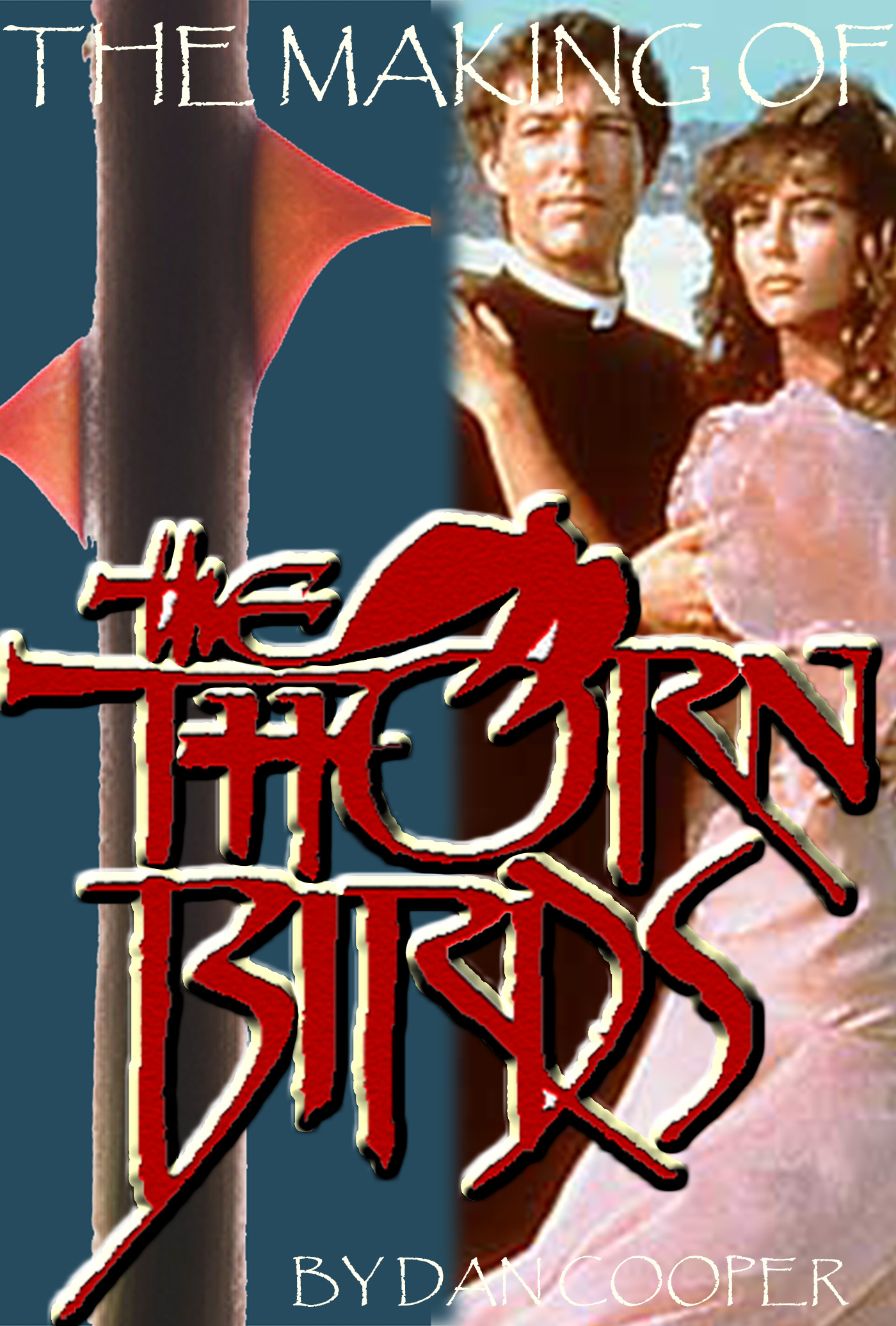
The Making Of The Thorn Birds,
buy the eBook at Amazon.com or BarnesandNoble.com or iTunes.